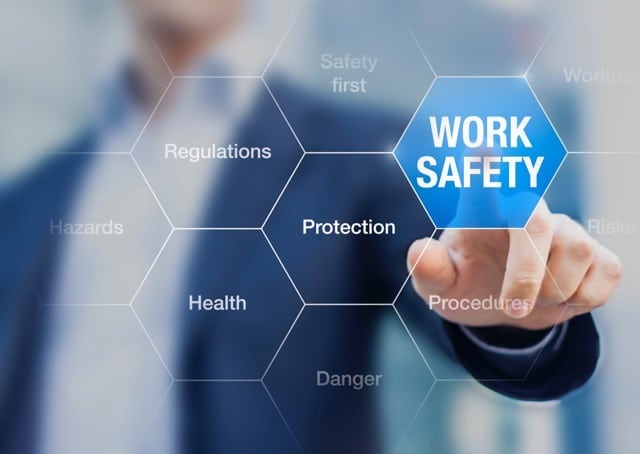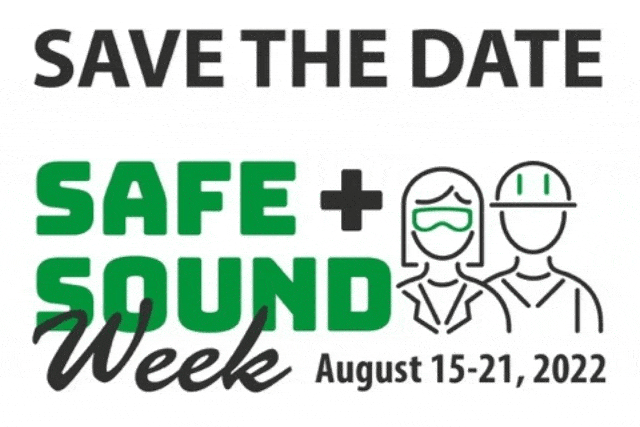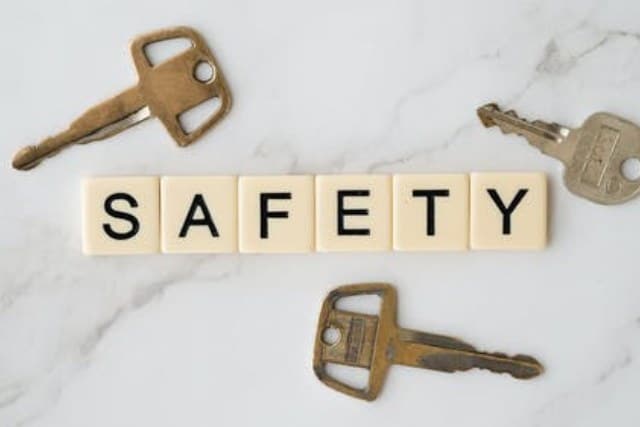In 1970, the Occupational Safety and Health Act was signed into law and in April 1971, the Occupational Safety and Health Administration (OSHA) issued the first standards for workplace safety. Similarly, the Mining Enforcement and Safety Administration was established in 1973, which lead to the creation of the Mine Safety and Health Administration (MSHA) in 1978. Since then, safety training has been a fundamental part of every safety and health program. OSHA’ s Construction, General Industry, Maritime, and Agricultural standards require that employers provide their employees with a safe workplace and that safety training is provided in a language and vocabulary that workers can understand. MSHA develops and enforces safety and health rules for all mines in the United States and sets regulations for the required safety training and safety plans related to the mining industry.
Safe + Sound Week
Safe + Sound Week will be held August 15-21, 2022 and all are welcome to participate. This nationwide event offers information and ideas focused on keeping America’s workers safe. It is an excellent opportunity to recognize your organization’s commitment to safety and health, build upon your current safety program or start the process of developing your own safety and health program.
Benefits of On Site Safety Managers
10 Benefits of Hiring an Environmental Health and Safety Professional
Hiring a third-party Environmental Health and Safety (EHS) professional for your next construction project provides significant advantages to your organization. Our site safety construction managers offer the credentials and experience you need and focus on keeping your employees safe.
Preventing Heat Related Injuries
Summer is upon us and with it comes an increased risk of heat related injuries to workers who must work outdoors. Many of the injuries and fatalities that occur due to heat, happen in the first few days of working in the warm or hot temperatures. Heat stroke, heat exhaustion and heat cramps can result from the rising temperatures if precautions are not taken. Employers have a duty to provide a safe workplace free of health and safety hazards, including heat related hazards. OSHA has launched a National Emphasis Program (NEP) on outdoor and indoor heat hazards which will remain in effect for three years unless cancelled or extended.
National Safety Stand – Down: May 2-6, 2022
This year, the National Safety Stand-Down will take place the week of May 2-6, 2022. This yearly event is designed to raise awareness about the risks of fall hazards. Falls remain a leading cause of workplace deaths each year and fall protection is one of the most frequently cited OSHA citations. Results of a fall hazard can lead to death, serious injuries, paralysis, broken bones, blunt trauma to the head and internal damage. Deaths and injuries can be prevented by planning ahead to get the job done safely. Employers are required to provide the correct fall protection equipment and train all workers to use the equipment effectively. The National Safety Stand-Down is an opportunity to ensure fall hazard risks are reduced or eliminated and train workers on this hazard.
Six Key Elements to Developing a Positive Safety Culture
A positive safety culture at your organization is good business practice. It’s beneficial to both management and employees and something all businesses should strive to achieve. Having one is important, but getting one is not always an easy task. It can take time to develop and apply the fundamental elements of a positive safety culture at your organization. However, once these six key elements are part of your safety program, your business will reap the benefits of a safe, productive, thriving workplace.
March is Ladder Safety Month: 10 Ladder Do’s and Don’ts
March is National Ladder Safety Month and an excellent opportunity to raise awareness about how to safely work around a common tool, found in almost every home and at many job sites. Often, ladder safety training can be inadequate because it is assumed that ladders are simple to use, compared to the more complex equipment such as cranes, forklifts and other power and handheld tools employees must use at construction sites. However, it is not only construction workers who use ladders on the job. Firefighters, building inspectors, electricians, painters, maintenance workers, power line installers and certain mechanics may be required to use a ladder for their daily tasks. Each year, too many people are injured or die as a result of unsafe work on or around ladders. Injuries caused by improper ladder use, falls from ladders and electrocution due to not using the correct type of ladder are preventable. Workers need to be educated and properly trained on the dangers that can arise when working on or around ladders for your job site to remain injury free.
Why Your Company Should Get AISC Certified Today!
Why Your Company Should Get AISC Certified Today!
AISC (American Institute of Steel Construction) Certification Programs define the standards for the steel industry. Their programs focus on the total process of steel fabrication and erection and are the most widely recognized in the industry. By submitting to this rigorous evaluation, your company will enhance every aspect of your organization. The entire process will evaluate the staff, knowledge, equipment, quality, safety, operations, procedures and commitment of your company and will ensure that your business has conformed to the standards of excellence established by the AISC.
Winter is Here! Are you Prepared for the Cold Weather?
In our fast paced world, work doesn’t stop just because the weather turns cold. Many workers are required to work outdoors despite the freezing temperatures. Construction workers, emergency, rescue, landscape, agricultural, utility and other employees who work outdoors are at risk of injury during winter months.
Prevent Slips, Trips and Falls in your Workplace
It is an unfortunate fact that slips, trips and falls are a leading cause of unintentional injuries and deaths in every industry. Wet surfaces, spills, snow, ice, rain, loose mats and a number of other hazards often found on jobsites can contribute to these accidents.









